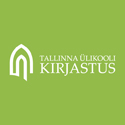Eesti päevalehtede muutumine Esimese maailmasõja ajal 1914–1917 [Changes in Estonian newspapers during World War I, 1914–1917]
Abstract
This paper explores how did the World War I influence the content and the visual form of the Estonian core dailies Postimees, Päewaleht and Tallinna Teataja in 1914–1917. The beginning of the war brought about several rapid changes in Estonian newspapers. The vast majority of editorial content was made up of war information. War was brought close to the reader as the fate and activities of common Estonian soldiers were constantly discussed. At the same time, newspaper readers were united with the allied war forces by the use of the inclusive ‘we’ in offi cial war reports. War was seen through the eyes of the Russian Empire and their allies. War was presented using more varied newspaper genres. However, newspapers did not modernise their news genres, e.g. use more modern, hierarchical news structures, such as the inverted pyramid. Instead, the use of combined genres, which included elements of short news, commentary and reportage, increased. This was the result of an over-abundance of information. Journalists became more active in acquiring information and explaining offi cial news to their readers (e.g. explaining in detail the locations of war events). In newspaper design, the techniques which were previously used only for extraordinary events were now introduced on a daily basis. This increased the quality of information presentation. In order to emphasize essential information, each issue of a newspaper started with the listing of important war events, war news was transferred 115 to the front page, there were many more headlined news stories, and a few single war stories were wholly or partially set in bigger and/or bolder typefaces. The domination of war information, the introduction of war topics and news as the focus of the newspaper were directly connected to the war. News value became the main factor in news selection and in how news items were presented. The growth of general variability was directly related to the fact that the variability of information sources grew considerably. Information was obtained from official news bulletins as well as from private letters of civilians and soldiers. Two innovations introduced during World War I were maintained in newspapers after the war. Firstly, news remained at the front page of the newspaper, starting the era of news journalism in Estonia (replacing the previous enlightening-instructive journalism). Secondly, headlined news stories did not disappear from newspapers; rather, headlines grew bigger and became more precise. Lasting changes were related to the visual form of newspapers, whereas contextual and topical changes were temporary, related to the progress of World War I.
Keywords
war, Estonian journalism, news genres, journalistic photos, visual form of newspapers, Estonian language
Full Text:
PDFRefbacks
- There are currently no refbacks.
Published by / Kirjastaja:

ISSN 2504-6616 (print/trükis)
ISSN 2504-6624 (online/võrguväljaanne)
